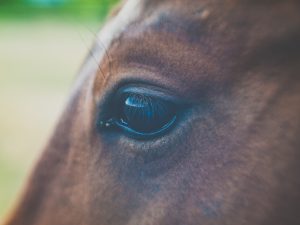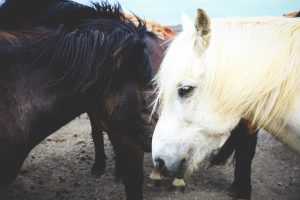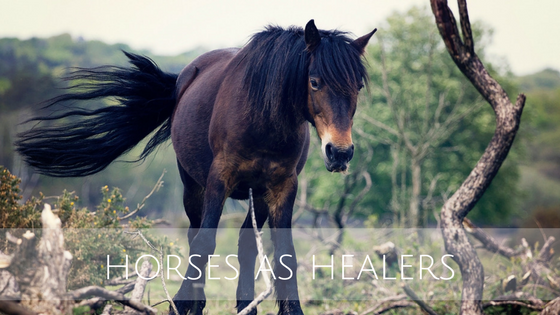[et_pb_section bb_built=”1″ inner_width=”auto” inner_max_width=”1080px”][et_pb_row][et_pb_column type=”4_4″ custom_padding__hover=”|||” custom_padding=”|||”][et_pb_text _builder_version=”4.9.4″ text_text_shadow_horizontal_length=”text_text_shadow_style,%91object Object%93″ text_text_shadow_horizontal_length_tablet=”0px” text_text_shadow_vertical_length=”text_text_shadow_style,%91object Object%93″ text_text_shadow_vertical_length_tablet=”0px” text_text_shadow_blur_strength=”text_text_shadow_style,%91object Object%93″ text_text_shadow_blur_strength_tablet=”1px” link_text_shadow_horizontal_length=”link_text_shadow_style,%91object Object%93″ link_text_shadow_horizontal_length_tablet=”0px” link_text_shadow_vertical_length=”link_text_shadow_style,%91object Object%93″ link_text_shadow_vertical_length_tablet=”0px” link_text_shadow_blur_strength=”link_text_shadow_style,%91object Object%93″ link_text_shadow_blur_strength_tablet=”1px” ul_text_shadow_horizontal_length=”ul_text_shadow_style,%91object Object%93″ ul_text_shadow_horizontal_length_tablet=”0px” ul_text_shadow_vertical_length=”ul_text_shadow_style,%91object Object%93″ ul_text_shadow_vertical_length_tablet=”0px” ul_text_shadow_blur_strength=”ul_text_shadow_style,%91object Object%93″ ul_text_shadow_blur_strength_tablet=”1px” ol_text_shadow_horizontal_length=”ol_text_shadow_style,%91object Object%93″ ol_text_shadow_horizontal_length_tablet=”0px” ol_text_shadow_vertical_length=”ol_text_shadow_style,%91object Object%93″ ol_text_shadow_vertical_length_tablet=”0px” ol_text_shadow_blur_strength=”ol_text_shadow_style,%91object Object%93″ ol_text_shadow_blur_strength_tablet=”1px” quote_text_shadow_horizontal_length=”quote_text_shadow_style,%91object Object%93″ quote_text_shadow_horizontal_length_tablet=”0px” quote_text_shadow_vertical_length=”quote_text_shadow_style,%91object Object%93″ quote_text_shadow_vertical_length_tablet=”0px” quote_text_shadow_blur_strength=”quote_text_shadow_style,%91object Object%93″ quote_text_shadow_blur_strength_tablet=”1px” header_text_shadow_horizontal_length=”header_text_shadow_style,%91object Object%93″ header_text_shadow_horizontal_length_tablet=”0px” header_text_shadow_vertical_length=”header_text_shadow_style,%91object Object%93″ header_text_shadow_vertical_length_tablet=”0px” header_text_shadow_blur_strength=”header_text_shadow_style,%91object Object%93″ header_text_shadow_blur_strength_tablet=”1px” header_2_text_shadow_horizontal_length=”header_2_text_shadow_style,%91object Object%93″ header_2_text_shadow_horizontal_length_tablet=”0px” header_2_text_shadow_vertical_length=”header_2_text_shadow_style,%91object Object%93″ header_2_text_shadow_vertical_length_tablet=”0px” header_2_text_shadow_blur_strength=”header_2_text_shadow_style,%91object Object%93″ header_2_text_shadow_blur_strength_tablet=”1px” header_3_text_shadow_horizontal_length=”header_3_text_shadow_style,%91object Object%93″ header_3_text_shadow_horizontal_length_tablet=”0px” header_3_text_shadow_vertical_length=”header_3_text_shadow_style,%91object Object%93″ header_3_text_shadow_vertical_length_tablet=”0px” header_3_text_shadow_blur_strength=”header_3_text_shadow_style,%91object Object%93″ header_3_text_shadow_blur_strength_tablet=”1px” header_4_text_shadow_horizontal_length=”header_4_text_shadow_style,%91object Object%93″ header_4_text_shadow_horizontal_length_tablet=”0px” header_4_text_shadow_vertical_length=”header_4_text_shadow_style,%91object Object%93″ header_4_text_shadow_vertical_length_tablet=”0px” header_4_text_shadow_blur_strength=”header_4_text_shadow_style,%91object Object%93″ header_4_text_shadow_blur_strength_tablet=”1px” header_5_text_shadow_horizontal_length=”header_5_text_shadow_style,%91object Object%93″ header_5_text_shadow_horizontal_length_tablet=”0px” header_5_text_shadow_vertical_length=”header_5_text_shadow_style,%91object Object%93″ header_5_text_shadow_vertical_length_tablet=”0px” header_5_text_shadow_blur_strength=”header_5_text_shadow_style,%91object Object%93″ header_5_text_shadow_blur_strength_tablet=”1px” header_6_text_shadow_horizontal_length=”header_6_text_shadow_style,%91object Object%93″ header_6_text_shadow_horizontal_length_tablet=”0px” header_6_text_shadow_vertical_length=”header_6_text_shadow_style,%91object Object%93″ header_6_text_shadow_vertical_length_tablet=”0px” header_6_text_shadow_blur_strength=”header_6_text_shadow_style,%91object Object%93″ header_6_text_shadow_blur_strength_tablet=”1px” box_shadow_horizontal_tablet=”0px” box_shadow_vertical_tablet=”0px” box_shadow_blur_tablet=”40px” box_shadow_spread_tablet=”0px” vertical_offset_tablet=”0″ horizontal_offset_tablet=”0″ z_index_tablet=”0″]
I had never spent much time around horses until about eight years ago. At the time, I’d been working with younger children and teens, mostly as a therapist, for about 11 years. I worked with these kids in different treatment settings, all of them pretty intense.
To be honest, before I spent time with them I really didn’t think horses were very intelligent animals.

A treatment center I worked for had started an equine therapy program and I was supposed to attend all the sessions with the kids I worked with. My job was to help facilitate, handle anything that came up with the kids, and to try and keep everybody participating.
“Sweet!” I thought, “I’m going to get to go play with horses once a week!”
About an hour in to the first session I went to, I couldn’t believe what I was seeing…
Let me back up a little. These kids were tough. And they were hurt. And in their experience, so far, the world hadn’t been a pleasant or happy place for most of them. Pretty much none of them wanted to be there for a nine-month minimum live-in treatment experience.
In that first session I saw these world-weary, hardened kids smile. I saw them become the children they deserved to be for a little while. And from a therapist’s point of view, I saw things happening in that hour that would have taken weeks, months, or maybe never, to accomplish in traditional “talk therapy.”
That experience changed my life and course forever, and I know that those sessions did the same for many, many kids who attended them.
I’ve spent most of my time with horses taking care of them. It’s an honor and gift to do so, and in and of itself therapeutic. I also spent a lot of time watching and working with kids and horses, and later with adults also. I pursued and received some certifications in Equine Assisted Psychotherapy and Learning, have observed some skilled practitioners working their magic. And, what it all boils down to for me is that these amazing creatures are the healers. We’re just here to help guide the process.
Why horses?
So what is it about these animals that is so profound? If you’ve never experienced it, I highly, highly recommend that you stand in silence with a horse some time. Watch its gaze, lay your hand gently on its side or shoulder if you can, sync your breathing, and just share its space and experience the moment in time together.
It’s quite possibly an experience you will call your mind back to many times in your life and be able to feel as if it were happening again in that very moment… Grounding doesn’t quite do it justice. You just have to experience it.
Horses are, by nature, prey animals. Because of this they are incredibly tuned in to their surroundings. As a result, “their natural behaviors are optimal for mental and physical health” (Greg Kersten, founder of Equine Assisted Psychotherapy and O.K. Corral Series). We humans have, over time, learned to honor our primitive instincts less and less. As a result, we simply aren’t as skilled at taking care of our health and safety.

Horses have a way of mirroring back to us, in an extremely precise and intuitive way, what we are communicating with our body and general energy. I once heard them described as “barometers” for what is happening with us internally when we’re in their presence. They can give us immediate feedback regarding our behaviors and feelings much like a “living bio-feedback machine.” (Trish Browne Gross, Rock-N-Horse Ranch)
The learning piece to this interaction happens when we become aware of what these animals are communicating to us about ourselves – things we may not even have been aware of or in touch with.
Skip Bertuzzi of Red Moon Ranch, who I’ve had the honor of learning from, puts it best:
“If you want to communicate with your horse, here’s the secret: slow down and pay attention to what your body is saying about your feelings. If you’re angry, upset, frustrated, or off balance—regardless of how you pretend to be feeling—your horse is going to know. Simply put, you can’t lie to a horse. Horses don’t care what we say because they are only reading our body language. When you’re riding, or even sitting on a horse for that matter, all the horse wants is for you to be authentic, surrender, and find your balance—something that, for many of us, is not an easy task.”
Aside from their direct interaction with us, we also have much to learn from horses’ natural behaviors. Observing how they naturally interact in the herd and in various “life circumstances” provides endless metaphor that can be applied to our own lives.
For example, Greg Kersten, who I referenced earlier and have also had the honor of learning from in two of his weekend certification clinics, teaches about the “re-circling process.” This beautiful behavior is a herd’s response to anything new and unknown. It can teach us so much about how we perceive and manage fear in our own lives, as well as about how we interact with each other in these times.
Kersten also teaches about the ways that horses respond to pressure and pain. Observing these behaviors can help us understand if we’re aware of our own responses to these. If we are, are we responding appropriately? Do we move away? Strike back?
To use an example from my own life, learning about and applying the metaphor that horses move away from pressure and strike out at pain has helped me incredibly, particularly as a “sensitive person.” While it’s unpleasant and hurtful when someone lashes out at you, reminding yourself that humans typically lash out in response to some real or perceived pain can help diffuse a situation and make it feel less personal.
In conclusion…
Horses nurture authenticity in us in a real-time, unfiltered way. How rare and incredible is that in a society where we are constantly pressured to adapt to the situation at hand whether we like it or not, to put on a happy face, to look out for number one with no regard for how we’re affecting those around us?

I believe that, among other things, what I was seeing impact those kids was the reflection back of emotions that no treatment provider or human for that matter could put in to words. Exploring the great unknown that is our inner selves takes bravery and a willingness to be vulnerable. What better guide and partner in this process than these amazing, beautiful creatures.
[/et_pb_text][/et_pb_column][/et_pb_row][/et_pb_section]

